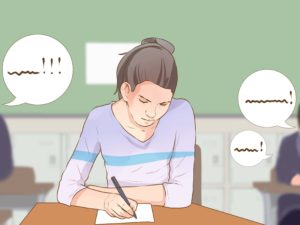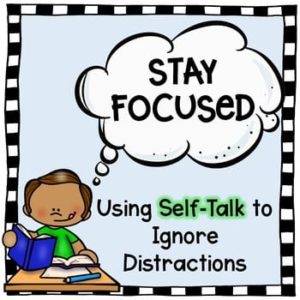Student Contributor: M. Caballero
 Peer ignoring is a valuable skill to teach students in the classroom which can help in reducing misbehavior’s. In order for it to be effective, the teacher must rehearse and practice it with the students. Essentially, it consists of students ignoring a classmate who is being either disruptive or distracting during class time
Peer ignoring is a valuable skill to teach students in the classroom which can help in reducing misbehavior’s. In order for it to be effective, the teacher must rehearse and practice it with the students. Essentially, it consists of students ignoring a classmate who is being either disruptive or distracting during class time
Peer ignoring can work wonders in the classroom, however, not all behaviors should be ignored. This tool involves teaching the peers/entire class to ignore another student’s disruptive behaviors to prevent reinforcing them. This technique works best with those misbehavior’s that are motivated on the basis of either gaining something or avoiding something, such as getting attention or avoiding school work. Typically, this involves the student’s turning away from the student when inappropriate behavior occurs or not responding to the student. The benefit of this technique is that it teaches the students to ignore disruptive behavior, without stopping the class to address the misbehaving student. Also, if the student who is misbehaving sees that his peers aren’t paying attention to his/her behavior, they will be more likely diminish their disruptive behavior.
 This tool falls under the Corrective phase of management because it is a way to correct misbehavior while it is occurring without having the teacher to stop the lesson to address the student. The students recognize disruptive behavior when it occurs and ignores it, so it does not continue to happen. I believe that this tool can also be apart of the preventive phase because it teaches students how to address distracting behavior before it occurs.
This tool falls under the Corrective phase of management because it is a way to correct misbehavior while it is occurring without having the teacher to stop the lesson to address the student. The students recognize disruptive behavior when it occurs and ignores it, so it does not continue to happen. I believe that this tool can also be apart of the preventive phase because it teaches students how to address distracting behavior before it occurs.
I think that this tool best fits with the student-directed and collaborative theory. Students take initiative (after teacher instruction) to block out disruptive behavior during class, along with working close with the teacher to ensure the behavior is diminished. Out of the two, I feel that it is more student-directed since the students are the ones who decide to ignore the behavior of their classmates on their own.
More Information –
Tool Source: Behavioral Intervention Guide
https://vtnea.org


